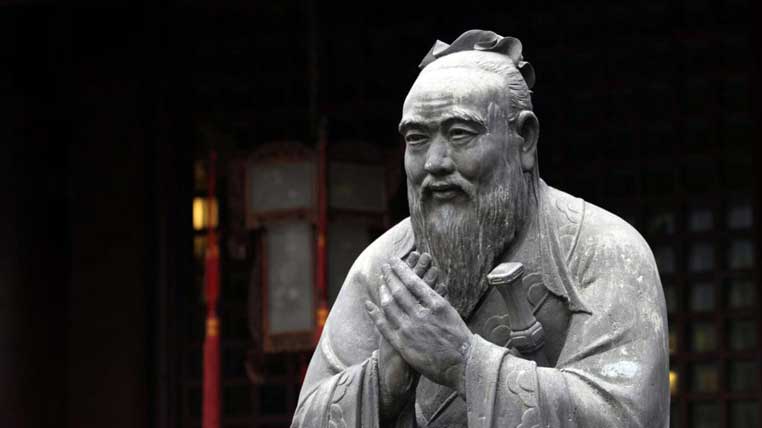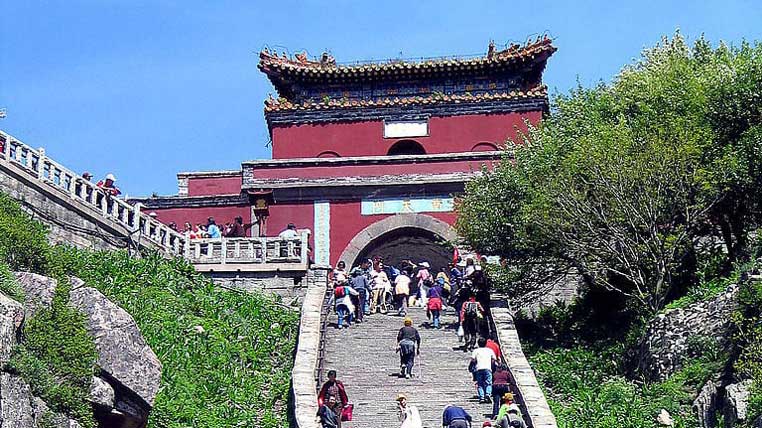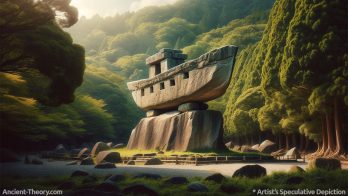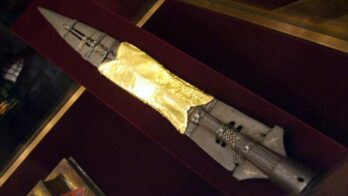Mount Tai Shan is a significant religious site in China, revered in both Taoism and Buddhism.
It is considered one of the five holy mountains in Taoism and a significant center for Buddhism, where monarchs would pay tribute to heaven and earth.
The mountain peaks, especially the high relief forms, have historically played a significant sacred role.
Ancient cultures believed that mountaintops were the abode of the gods, who descended from the heavens, water, or earth.
Several ancient mythologies describe mountain peaks as the dwelling places of gods and goddesses.
These include the Polar Mountain of Muslim esotericism, Shambala in Tibet, Monsalvat or the Grail Seat in the West, Olympus in Greece, Sion (a hill that is part of a group called the Heart of the World) in Judaism, and Mount Tai Shan in China, which is considered the abode of the immortals.
An Important Pilgrimage Center for Emperors
Throughout Chinese history, Mount Tai Shan has been an important pilgrimage center for 72 state rulers, including emperors who visited the mountain to pray to the earth for their ancestors as soon as they ascended the throne.
For 3,000 years, emperors, poets, and scientists have made pilgrimages to Mount Tai Shan, leaving hundreds of inscriptions on stone tablets to pray to the gods.
Scientists and poets admired the grandeur of the mountain and composed poems and prose in its honor, with over 2,000 inscriptions on rocks and stone tablets attesting to the visits of emperors and scientists.
Around 1,300 years ago, Emperor Li Longji of the Tang Dynasty wrote on the walls of a steep slope 13 meters from the ground.
Mount Tai Shan has been a significant site since ancient times, overlooking the floodplain of the Yellow River, the birthplace of Chinese civilization.
The mountain served as the boundary between the known and unknown worlds in the early days of the Chinese Empire, dividing the world of tributes, irrigation works, work, and death from the wild world of Shantung to the east.
Shantung was believed to be the land of magicians who researched the secrets of eternal life and visited the abodes of immortals on the islands of the East Sea.
In ancient times, the Han population worshipped nature, honoring the rivers and mountains among their numerous gods.
The legendary Emperor Shun is credited as the author of the great sacrifices offered to Heaven and Earth at Mount Tai Shan, which took place 2,000 years before the birth of Christ.
The first Emperor Ch’in, who conquered and united the so-called Warring States, visited Mount Tai Shan to worship in 219 BC. Emperor Wu Ti made his pilgrimage to the sacred mountain in 110 BC to conduct the great sacrifices of that year.
Imperial patronage continued throughout the centuries. In the eleventh century, a Sung Emperor honored Mount Tai Shan as the “Equal of Heavens.”
In 1736, Emperor Chien Lung offered the mountain a magical jade tablet as an offering.
However, Mount Tai Shan was never officially connected to the religious doctrine of the Chinese empire, Confucianism. In fact, it is the most sacred of the five mountains of Taoism, the faith of magicians, alchemists, outcasts, and rebels.

The Taoist Doctrine
Taoism is at once the most austere and most worldly of religions. In the sixth century BC, the Han peoples’ lands were ravaged by cruel wars.
The first Taoists believed peace could only be found by abandoning material ambitions and turning to contemplation and a true understanding of the inner and outer worlds.
Of the Path they preached, it is said: “Those who know, do not speak. Those who speak do not know.”
According to legend, Lao Tzu is the founder of Taoism and, by tradition, the author of the sacred text Tao Te Ching (“The Way and its Power”).
History has left too few traces of this sage. It is believed he was born around 604 BC, his true name was Li Erh, and he was a librarian at the court of the Chou dynasty.
The teachings of this contemporary of Confucius speak of the science of acting without effort by knowing and following the ways of nature without resistance.
By the fifth century, Taoism had become a well-defined religion, with many aspects borrowed from Mahayana Buddhism.
Tao morality was individualistic and democratic, based on the return to small, autonomous communities of free people, which the Taoists believed had existed in the past.
From their point of view, conflicts, and struggles resulted from people’s incapacity to act according to the true nature of reality, Tao.
In Chinese philosophy, Taoism emphasizes human nature’s receptive, passive, and contemplative aspects, associated with the feminine principle, Yin.
The ancient Taoists refused to distinguish between “higher” and “lower” levels in the human and animal worlds, preferring to observe and seek out the unity and harmony that characterize the essence of all things.
Over time, Taoism became associated with mysterious popular magical beliefs as Taoists became masters of alchemy and divinatory arts.
In most people’s minds, the Taoist pantheon becomes confused with the gods and demons associated with the new Buddhist faith.

Mount Tai Shan: A Vibrant Energy Center
The view of Mount Tai Shan from its peak is truly spectacular. It offers a panoramic view of the Yellow River in the north and the province where Confucius was born in 551 BC to the south.
Confucius, along with his disciple Mencius, taught the philosophy that would serve as the basis of governing the Chinese empire for two millennia. At the summit of the mountain, numerous monuments commemorate Confucius’ visits.
“The terrace with a view of Lu’s kingdom” is where Confucius explored the empire. The words “Confucius finds the world small” are etched on a vertical stone.
While Taoist ethics may not have been particularly useful in governing the country, the services of Taoist masters were needed to perform ancestral rites.
Feng-Shui, the knowledge of “wind and water,” was employed to locate suitable tombs for ancestors. Taoists viewed the earth as a living organism imbued with vital energies and were the most skilled in these matters.
The sacred places of Taoism were selected for their status as vital energy centers, and Mount Tai Shan, the most mysterious and outstanding of them all, drew in unlimited powers.
Numerous other temples are built along the mountain, where pilgrims can pray for fertility, luck in business, longevity, or knowledge of the future.
The deities venerated in these temples represent all the traditional religions of China, including the mountain god from the most ancient times.
This is not uncommon for Taoists but rather natural.
There is no single answer to life’s big questions, as truth must be sought in the diversity of nature and human experience. No god can satisfy all the desires of mortals on their own.

Worshippers of Countless Gods
Climbing the 7,000 steps of Mount Tai Shan from Tai’an to the Jade Emperor’s temple at the top, visitors will find temples, groves of pines and cypresses, waterfalls, and torrents.
Vegetation covers about 80% of the mountain, which includes 989 species of flowers, including 462 species of medicinal plants: the Chinese hawthorn, Taishan ginseng, and Chinese gromwell, which are endemic to the region.
The mountain is also home to over 200 species of animals and 122 species of birds. About 110 historical sites and over 20,000 ancient trees can be found on the mountain.
Emperor Liu Che of the Han dynasty (141-86 BC) visited Mount Tai Shan ten times.
It is said that the emperor planted 1,000 cypresses at Dai Temple, of which only five have survived to this day. Two of the five have lost their bark.
Surprisingly, though, some branches still greet tourists with their green leaves.
Described by UNESCO as a true cultural and historical treasure of world renown, Mount Tai Shan is an ideal place for people who want to learn about the history of China while admiring the beautiful landscapes.
In the 1930s, a Western traveler reported that 10,000 people climbed Mount Tai Shan daily during the annual pilgrimage from February to May.
At the foot of this mountain lies the Temple of the Peak, dedicated to the mountain god. The temple’s main room is splendidly painted and depicts a procession in honor of this god.
After the spread of Buddhism in the 4th century AD, the mountain god was identified as the “Judge of the Dead” in the Buddhist faith.
During the ascent, two temples are dedicated to female deities, the Empress of the West, Wang Mu Chi, and the North Star Goddess, Tai Mu. Tai Mu has three eyes and multiple arms and is likely originally from India.
Her palace is considered the Great Bear, which describes an eternal circle around the North Star.
The huge slab on which the Diamond Sutra is carved is another testimony to the strong link between this sacred place of Taoism and Buddhism.
The Diamond Sutra is the most respected sacred Buddhist writing among the Chinese, and it teaches that everything is an illusion.
The last stage of the ascent leads the pilgrim on a steep climb through the South Heavenly Gate to the temple dedicated to the Daughter of the Mountain, Pi Hsia Yuan Chun, the goddess of dawn.
She is said to have been the first lady of Tai Shan. The most important temples on the summit are dedicated to Yu Huang. The Jade Emperor has kept first place in the Taoist pantheon, the Master of the Present Time.

Mount Tai Shan Travel Tips
Excursions to Mount Tai Shan are recommended from September to October or April to June because winter months can be extremely cold. The weather on the mountain is very dynamic, with the possibility of sunny weather at the foot of the mountain and torrential rains at the top.
High-speed trains run every two hours, linking Beijing and Shanghai to Tai’an.
An entrance ticket to Tai Shan costs 127 yuan (20.36 dollars) from February 1 to November 30. From December 1 to January 31, the ticket cost is 110 yuan (17.63 dollars).
The most popular route from the East is called the “Imperial Road” because emperors favored it throughout history. Nearly 7,000 winding steps lead to the top of the mountain, and the route is dotted with sacred spots, sculptures, and inscriptions of famous Chinese writers and leaders.
From the Red Gate, tourists will encounter sites such as the Middle Gate of Heaven, Wudaf, 1,600 Steps, and more than 300 inscribed rocks.
A bus tour departing from the village of Tianwaicun and stopping at the Middle Gate of Heaven can be taken for 30 yuan (4.80 dollars).
From the Middle Gate of Heaven, tourists can ascend to the South Gate of Heaven at the top of the mountain by cable car for 80 yuan (12.80 dollars). However, by taking the cable car, tourists will miss out on much of the beauty of the journey on foot.
Visitors can find many tea houses, restaurants, and shops along the routes.
From the South Gate of Heaven, tourists can ascend to the Jade Emperor Peak at the top of the mountain. To the peak’s southeast is a rock called the “Peak from which the Sun can be seen,” an ideal spot to view the sunrise.
The local government recently introduced several projects to improve tourism, including the “Fengsha Sacrifice” ritual show in a nearby park.
At Ancient Theory we only use trusted sources to document our articles. Such relevant sources include authentic documents, newspaper and magazine articles, established authors, or reputable websites.






